Complete Solutions to Exercise 1 ( TOPICAL PROBLEMS ) of chapter SEMICONDUCTORS of Class 12 book with complete answers and questions
| Class 12 | PHYSICS |
| Chapter | SEMICONDUCTORS |
| MHTCET PREP GUIDE | Exercise 1 ( TOPICAL PROBLEMS ) |
| Number Of Questions | 84 |
| Academic Year | 2023-24 |
When the conductivity of a semiconductor is only due to breaking of covalent bonds, the semi conductor is called.
View SolutionIf a small amount of antimony is added to germanium crystal
View SolutionThe maximum wavelength of electromagnetic radiation, which can create a hole-electron pair in germanium. (Given that forbidden energy gap in germanium is 0.72 eV)
View SolutionBasic building blocks of all electronic circuits are
View SolutionIn a crystal, atomic separation is around 2A to 3A. At this separation due to interatomic interaction, energies of
View SolutionGas is-
View SolutionThere is no hole current in conductors because they have
View SolutionIf `N_(P)` and `N_(e)` be the numbers of holes and conduction electrons in an extrinsic semiconductor, then
View SolutionAn n-type and p-type silicon can be obtained by doping pure silicon with.
View SolutionIn an insulator, the forbidden energy gap between the valence band and conduction band is of the order of
View SolutionCorrect one is
View SolutionForbidden energy gap in a semiconductor is
View SolutionIn its crystalline structure, every Si or Ge atoms are attached to other atoms by
View SolutionLet `n_(p) and n_(e)` be the number of holes and conduction electrons respectively in a semiconductor. Then,
View SolutionAt elevated temperature, few of covalent bonds of Si or Ge are broken a vacancy in the bond is created. Effective charge of vacancy or hole is
View SolutionCarbon, silicon and germanium atoms have four valence electrons each. Their valence and conduction bands are separated by energy band gaps represented by `(E_(g))_(C),(E_(g))_(Si)` and `(E_(g))_(Ge)`, respectively. Which one of the following relationship is true in their case?
View SolutionA intrinsic semiconductor at a absolute zero of temperature behaves as
View SolutionWould there be any advantage to adding `n`-type or `p`-type impurities to copper
View SolutionThe temperature of germanium is decreased from room temperature to 100 K, the resistance of germanium
View SolutionThe contribution in the total current flowing through a semiconductor due to electrons and holes are `3/4` and `1/4` respectively. If the drift velocity of electrons is `5/2` times that of holes at this temperature, then the ratio of concentration of electrons and holes is
View SolutionWhich one of the following statements is false ?
View SolutionThe forward biased diode connection is
View SolutionReverse bias applied to a junction diode
View SolutionIn a reverse biased p-n junction, when the applied bias voltages is equal to the breakdown voltage, then
View SolutionIn a p- n junction diode not connected to any circuit,
View SolutionWhen LED is forward biased, then
View SolutionA full wave rectifier uses two diodes with a load resistance of `100 Omega`. Each diode is having negligible forward resistance. Find the efficiency of this wave rectifier.
View SolutionIn forward biasing of the p-n junction:
View SolutionIn a `P-N` junction diode :
View SolutionIn the middle of the depletion layer of a reverse - biased `p - n ` junction , the
View SolutionIn a semi conductor diode , the barrier potential offers opposition to only -
View SolutionFor germenium crystal, the forbidden energy gap in joules is
View SolutionA 220 V AC supply is connected between points A and B.

What will be potential difference across capacitor C ?
View SolutionIf an alternating voltage is applied across a diode in series with a load, then
View SolutionIn half - wave rectification, what is the output frequency, if the input frequency is 50 Hz ? What is the output frequency of a full - wave rectifier for the same input frequency ?
View SolutionThe p-n junction which generates an emf when solar radiation falls on it, with no external bias applied, is a
View SolutionAvalanche breakdown in a `PN` junction diode is to
View SolutionIf in a `p-n ` junction diode , a square input single of `10 V` is applied as shown
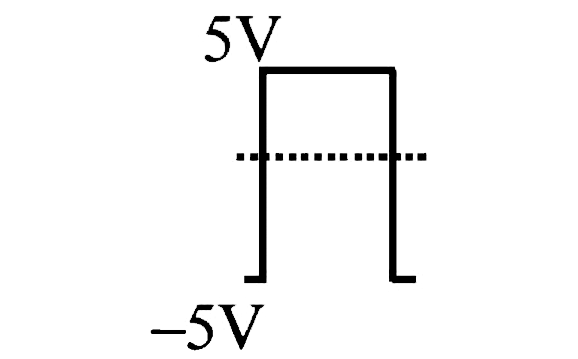
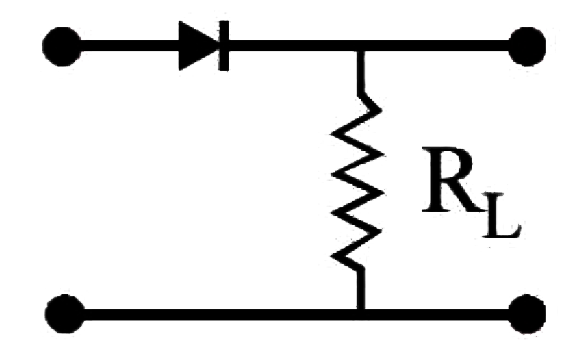
View SolutionPure Si at 300 K has equal electron `(n_(e))` and hole `(n_(h))` concentrations of `1.5xx10^(16)m^(-3)` doping by indium increases `n_(h)` to `4.5xx10^(22)m^(-3)`. Caculate `n_(e)` in the doped Si-
View SolutionIn an unbiased p-n junction,
View SolutionThe difference in the variation of resistance with temperature in a metal and a semiconductor arises essentially due to the difference in the
View SolutionIn semiconductor the concentrations of electron and holes are `8xx10^(18)//m^(3)` and `5xx10^(18)//m` respectively. If the mobilities of electrons and hole are `2.3 m^(2)//`volt-sec and `0.01m^(2)//` volt-sec respectively, then semicondutor is
View SolutionA light emitting diode `(LED)` has a voltage drop of `2V` across it and passes a current of `10 mA`. When it operates with a `6V` battery through a limiting resistor `R`. The value of `R` is
View SolutionRectifier converts
View SolutionThe probability of electrons to be found in the conduction band of an intrinsic semiconductor at a finite temperature
View SolutionA transistor is operated in common emitter configuration at `V_(c)=2 V` such that a change in the base current from `100 muA` to `300 muA` produces a change in the collector current from `10 mA` to `20 mA`. The current gain is
View SolutionAn n-p-n transistor can be considered to be equivalent to two diodes, connected. Which of the following figures is the correct one ?
View SolutionThe transfer characteristics of a base biased transistor has the operation regions, namely, cutoff, active region and saturation region. For using the transistor as an amplifier it has to operate in the
View SolutionFor a transistor the parameter `beta=99`. The value of the parameter `alpha` is
View SolutionThe current gain in the common emitter mode of a transistor is 10. The input impedance is `20kOmega` and load of resistance is `100k Omega`. The power gain is
View SolutionIf `beta, R_(L)` and r are the AC current gain, load resistance and the input resistance of a transistor respectively in CE configuration, the voltage and the power gains respectively are
View SolutionIn a common base configuration (transistor circuit) `I_(E)=1mA, I_(C)=0.95mA`. The value of base current is
View SolutionIn case of `NPN`-transistor the collector current is always less than the emitter current because
View SolutionThe input resistance of a common emitter transistor amplifier, if the output resistance is `500 kOmega`, the current gain `alpha=0.98` and the power gain is `6.0625 xx 10^(6)` is
View SolutionAn amplifier has a voltage gain `A_(v)= 1000`. The voltage gain in `dB` is:
View SolutionA `p-n-p` transistor is said to be in active region of operation, When
View SolutionThe current of transistor in common emitter mode is 49. The change in collector current and emitter current corresponding to the change in the base current by `5.0 muA`m will be :-
View SolutionA transistor can be used practically in
View SolutionIn an n-p-n transistor in CE configuration when `V_(BE)` is increased by small amount, then
View SolutionFor a transistor circuit, `I_(B)=10mA` and `I_(C)=5.2mA`,
View SolutionThe current gain of a common base transistor circuit is 0.96. On changing the emitter current by 10.0 mA, the change in the base current will be
View SolutionIn case of `NPN`-transistor the collector current is always less than the emitter current because
View SolutionIn transistor, forward bias is always smaller than the reverse bias. The correct reason is
View SolutionThe device that can act as a complete electronic circuit is
View SolutionThe voltage gain of an amplifier with `9%` negative feedback is `10`. The voltage gain without feedback will be
View SolutionThe minimum potential difference between the base and emitter required to switch a silicon transistor ON is approximately?
View SolutionIn the `CB` mode of a transistor, when the collector voltage is changed by `0.5` volt. The collector current changes by `0.05 mA`. The output resistance will be
View SolutionSymbolic representation of four logic gates are shown as
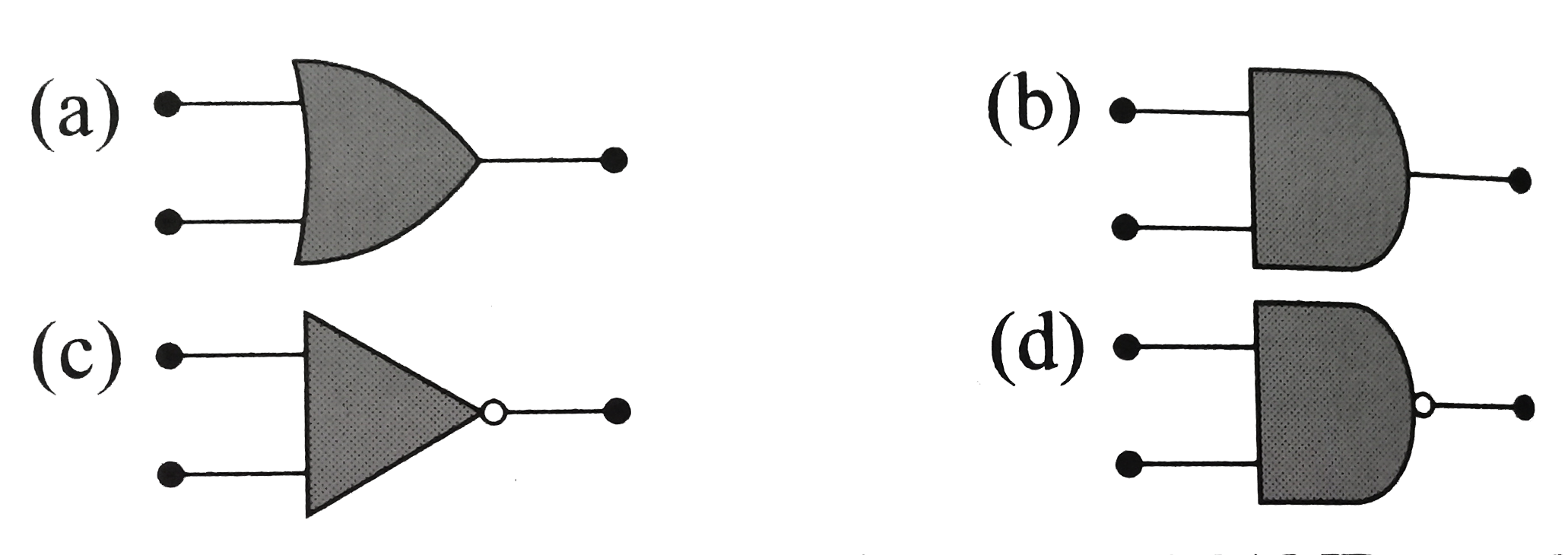
View SolutionSymbolic representation of NOR gate is
View SolutionThe output of given logic circuit is
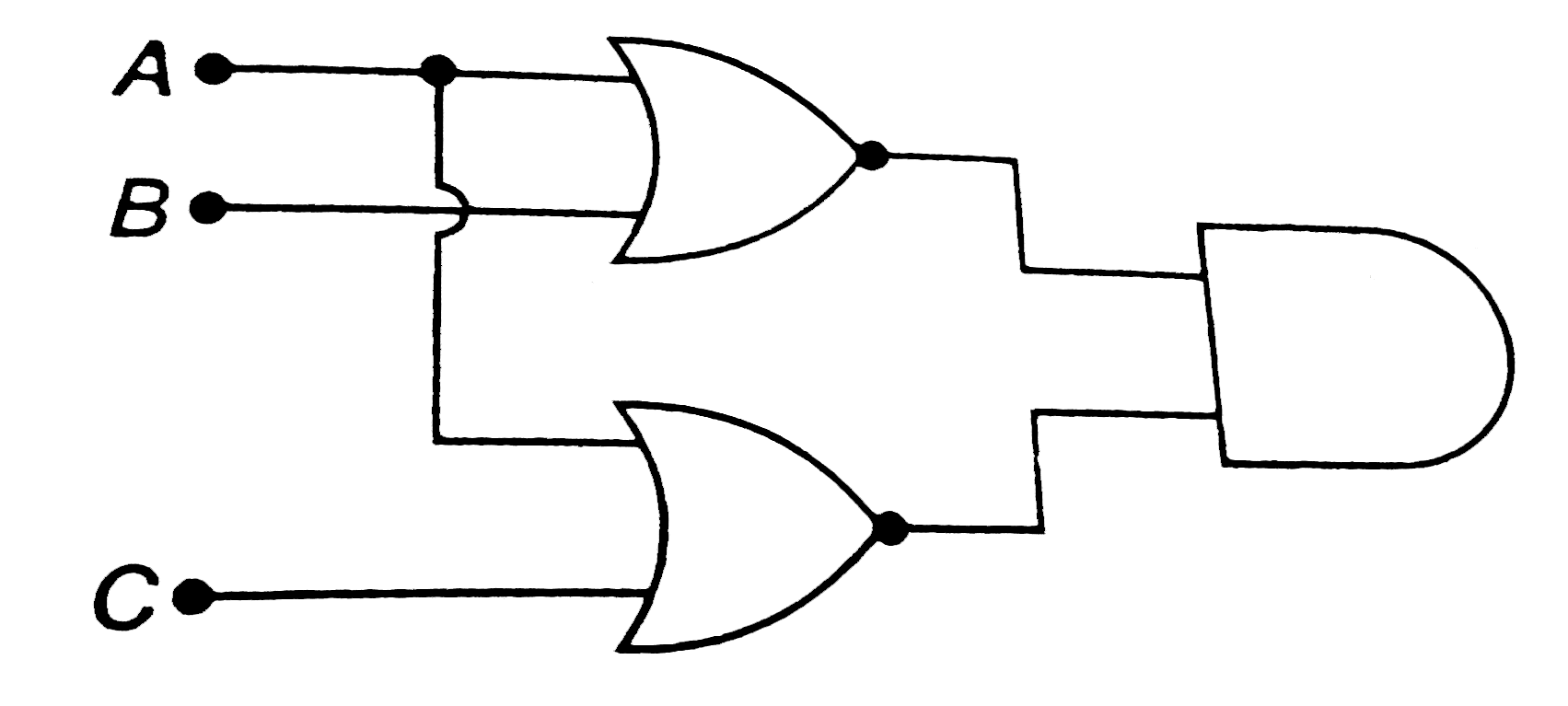
View SolutionTo get an output 1 from the circuit shown in the figure, the input must be
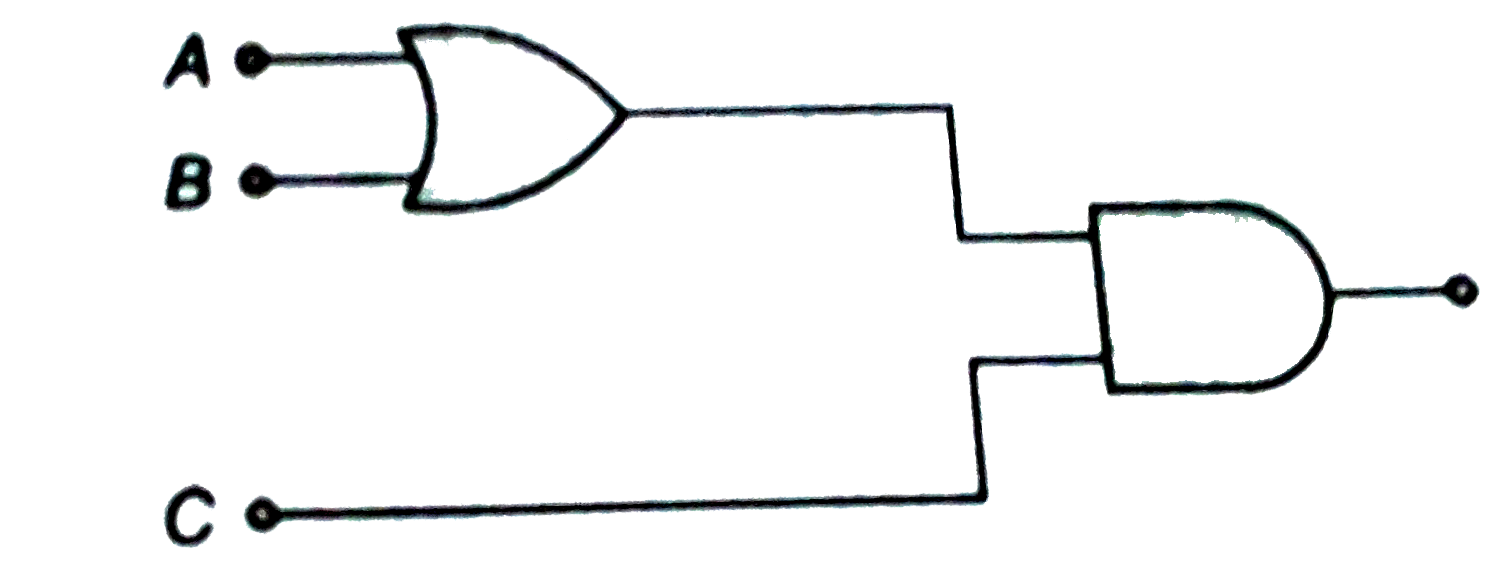
View SolutionThe circuit is equivalent to

View Solution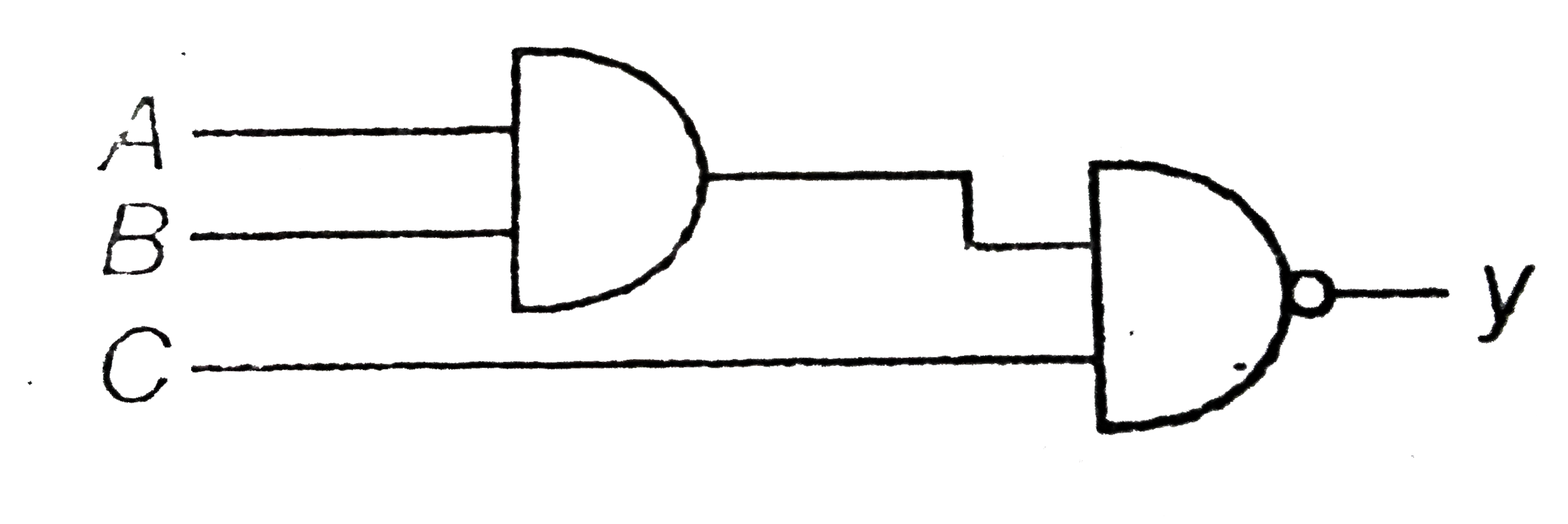
The output y, when all three inputs are first high and then low, will respectively be
View SolutionAn `AND` gate is following by a `NOT` gate in series. With two inputs `A` & `B`, the Boolean expression for the out put `Y` will be :
View SolutionWhich logic gate is represented by the following combination of logic gates
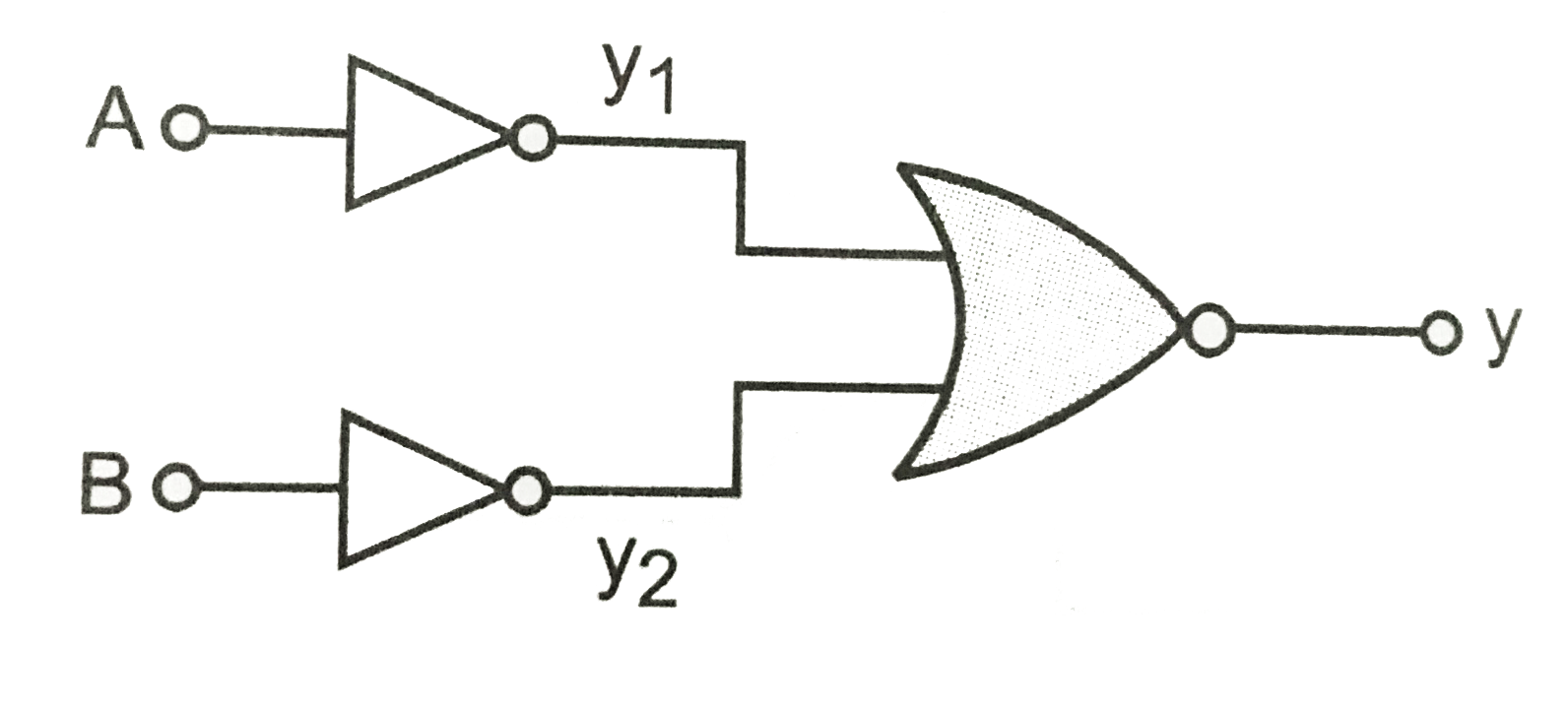
View SolutionTo which logic gate does the truth table given below correspond ?
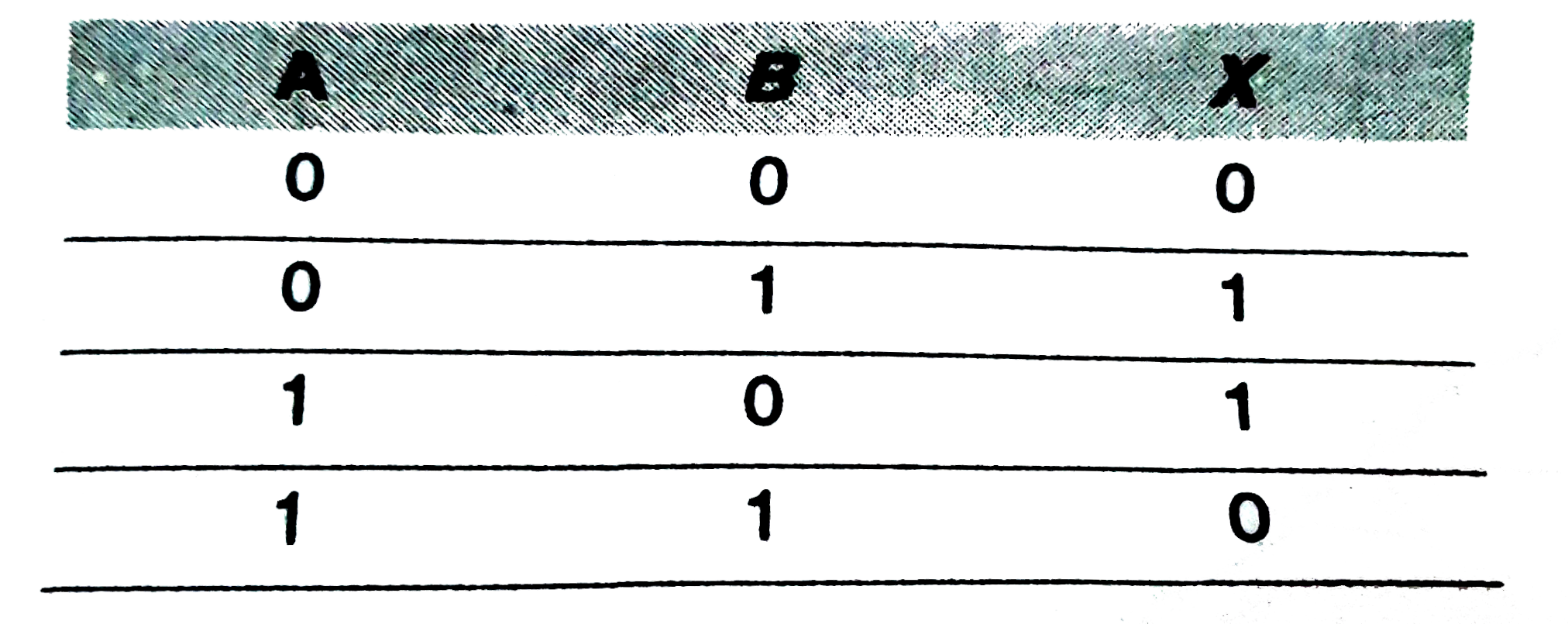
View SolutionIn Boolean algebra `A + B = Y` implies that :
View SolutionDigital circuit can be made by repetitive use of
View SolutionIf `A = B = 1`, then in terms of Boolean algebra the value of `A.B + A` is not equal to.
View SolutionFor the given combination of gates, if the logic states of inputs `A,B,C,` are as follows `A=B=C=0` and `A=B=1, C=0` then the logic states of output `D` are
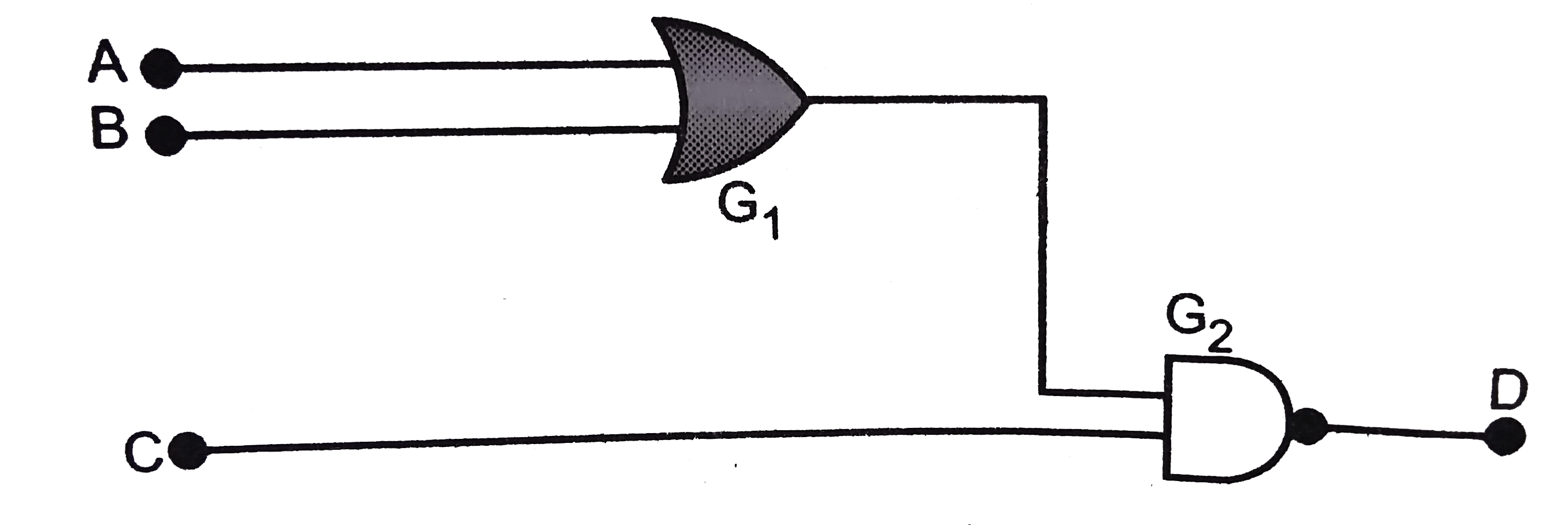
View SolutionWhich of the following gates will have an output of 1
View SolutionWhat will be the input of `A` and `B` for the Boolean expression `bar((A+B)).bar((A.B))=1`?
View SolutionTo get an output 1 from the circuit shown in the figure, the input must be

View SolutionWhich of the following is the truth table for the circuit below ?

View Solution
Exercise 1 ( TOPICAL PROBLEMS ) questions and complete solutions for chapter SEMICONDUCTORS of MHTCET PREVIOUS YEAR PAPERS AND PRACTICE PAPERS of Class 12